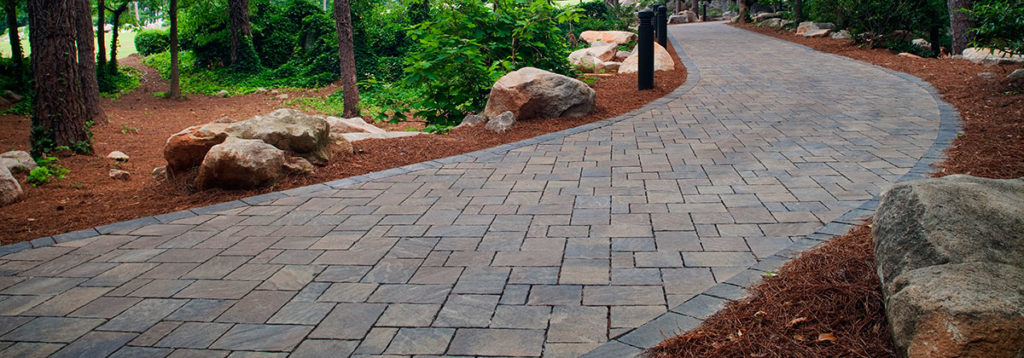
- Pavers move with different soil conditions and won’t crack.
- Concrete pavers or three times stronger than normal poured concrete.
- Most concrete pavers have a 50-year life expectancy
- With concrete pavers, it’s easy to create your own design with many different colors and shapes
- Concrete pavers have a lower installation cost and there is no regular maintenance
With concrete pavers your design possibilities are endless. They come in many different patterns, shapes, and colors. The many different kinds of concrete pavers allow you to easily design and create a new patio, sidewalk, driveway, or parking area that will withstand harsh weather. Pavers can easily flow and change with your existing landscape, something that is not possible to achieve with a rigid pavement.
By following the manufacturer’s recommendations for installation, you achieve a pavement and surface that is rigid and also flexible. The interlocking joints between your pavers allow for your driveway or sidewalk to slightly move without cracking. This movement typically happens during the freeze and thaw of the seasons.
Pavers can also be easily removed for repairs or to access the ground underneath. You can easily remove and reinstall the same pavers with no ugly patches and repairs like you have to do with concrete. If a paver is ever stained or broken in any way, it can then be easily replaced. All you have to do is lift out the affected area regrade it, re-compact the base and bedding sand, and reinstall the new pavers. It is a very inexpensive and easy process.
Unlike concrete or asphalt, concrete pavers are virtually maintenance-free and do not need to be regularly sealed. Concrete pavers typically have a minimum compression strength about three times stronger than regular poured concrete.
Concrete pavers are also very easy to maintain. Occasional rinsing and regular sweeping are usually the only maintenance that is needed. If they become heavily stained, a simple pressure wash or spot treatment with a brush, cleaner, and water will usually solve the problem. It is recommended that you re-sand the joint between the pavers after you pressure wash the surface.
If you have any questions or need to talk to someone regarding your upcoming project, please contact the industry experts at Exteriors & Outdoors.
